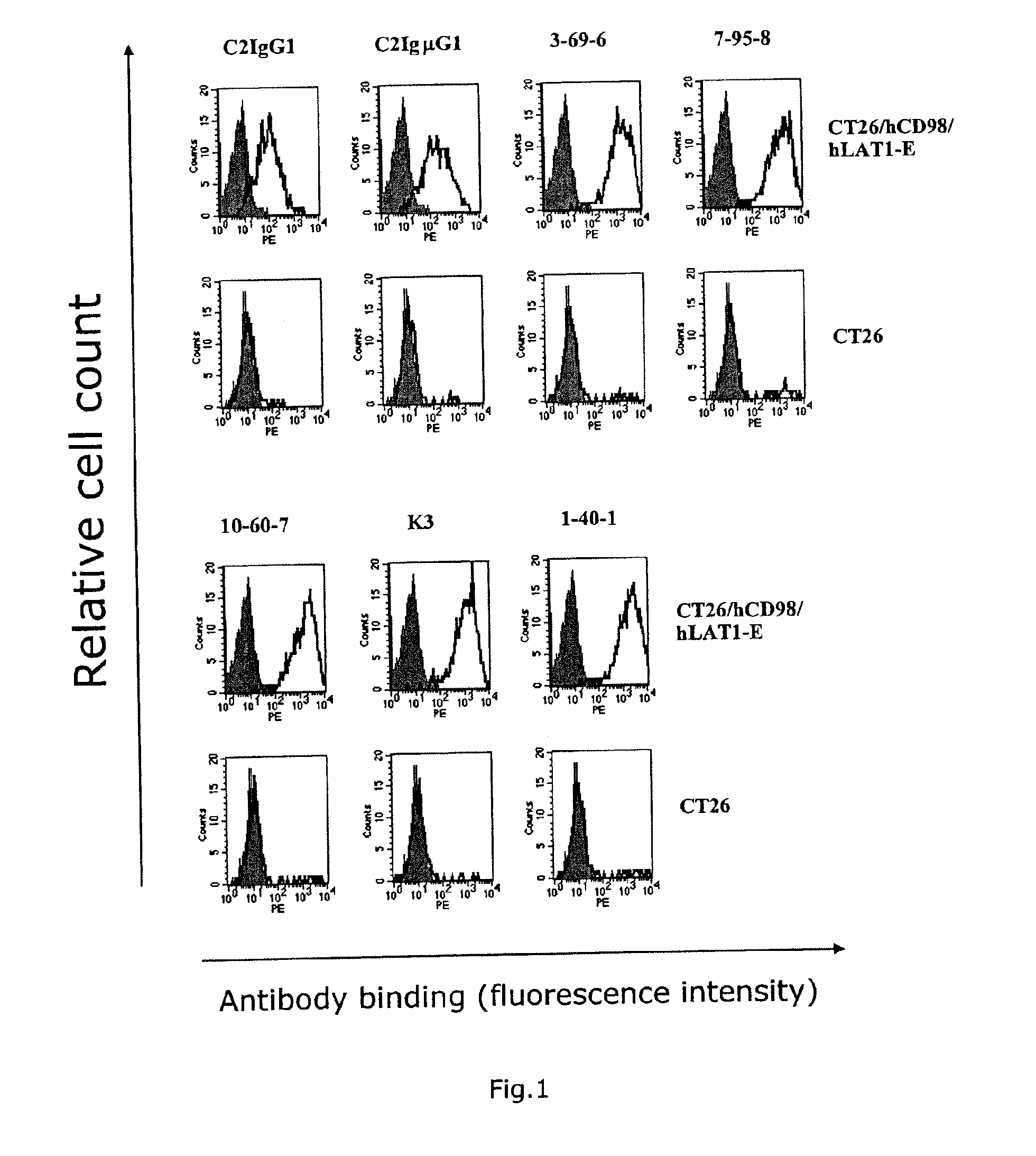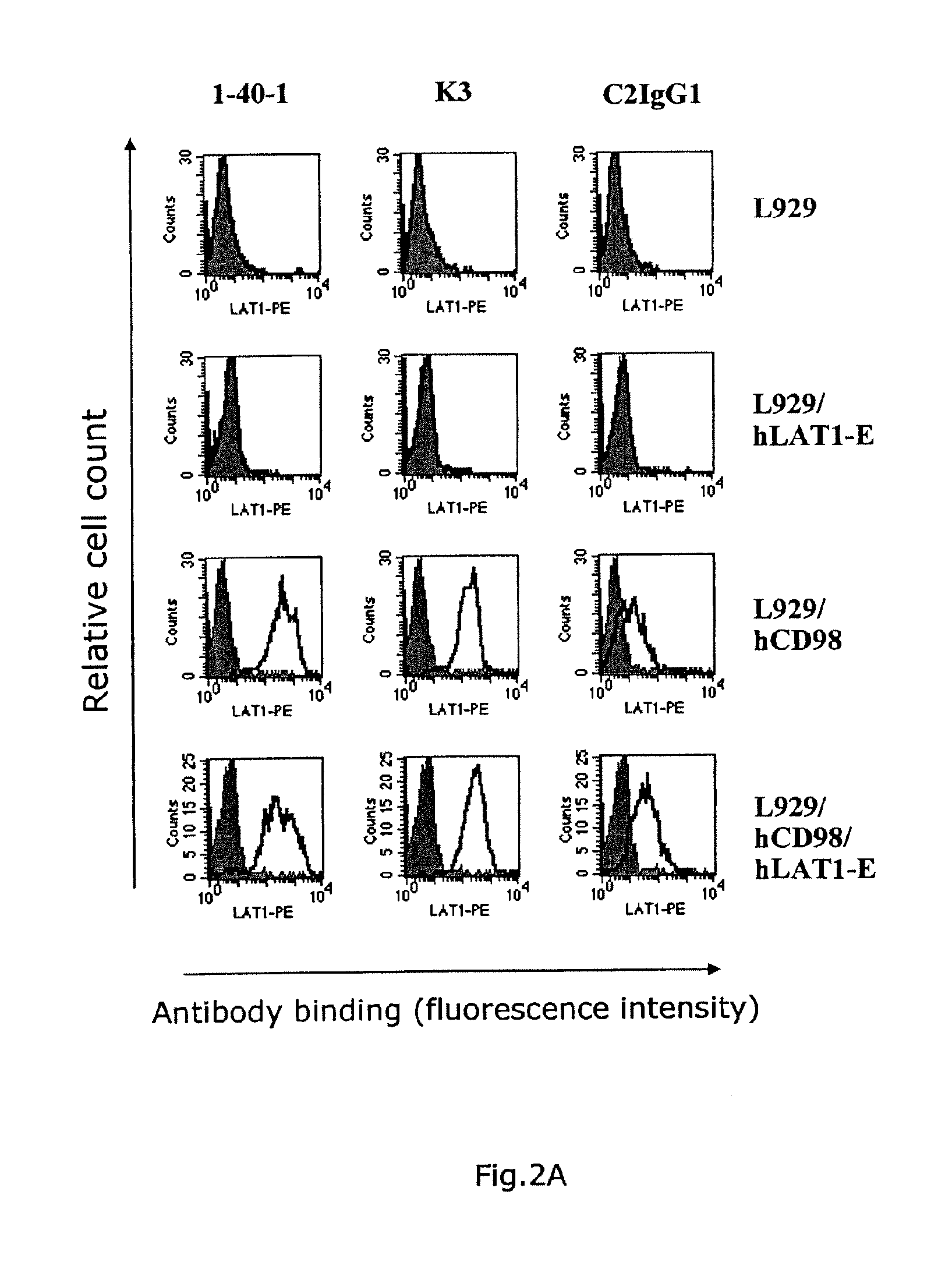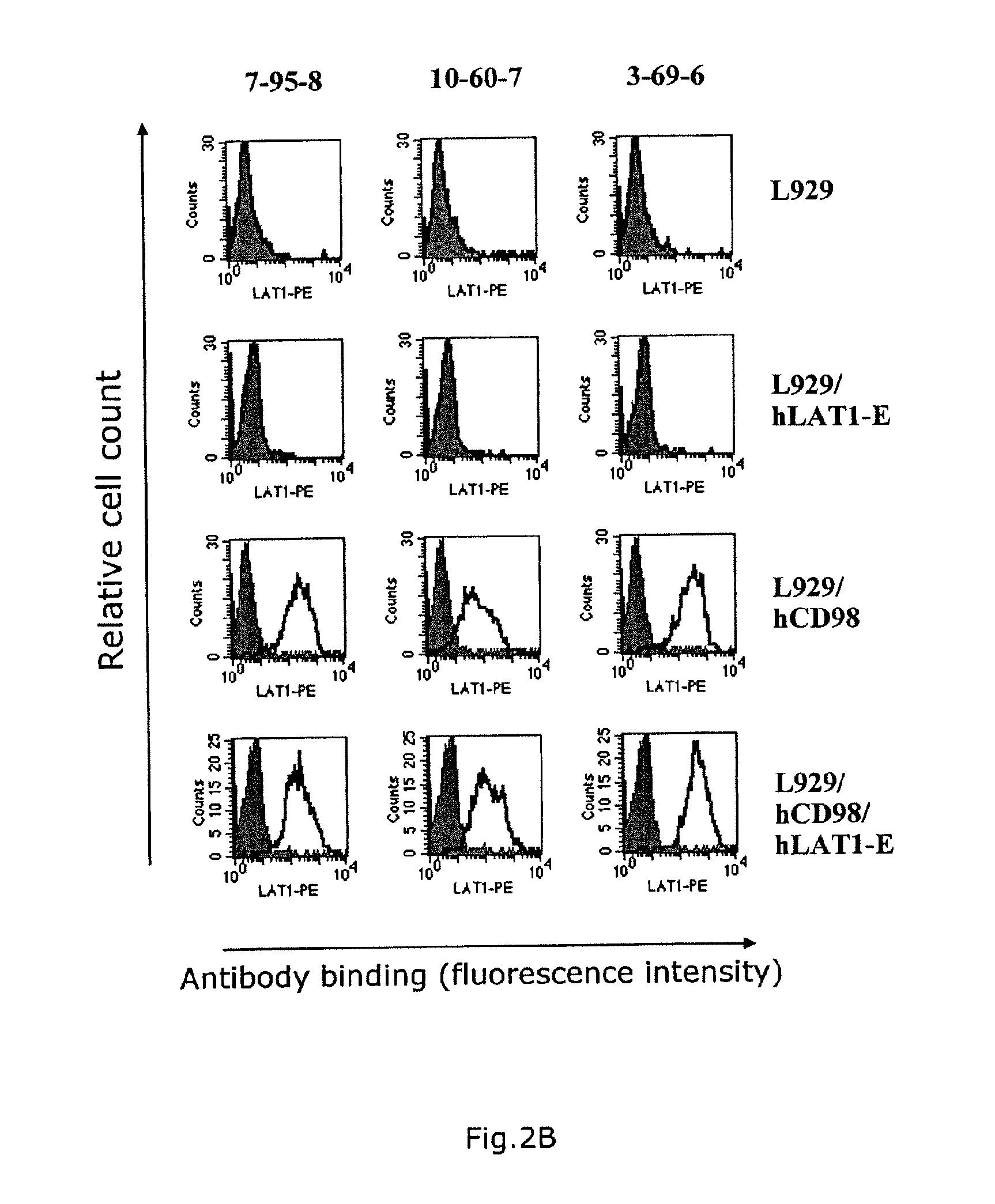Anti-cd98 antibody
a technology of anti-cd98 and antibody, which is applied in the field of monoclonal antibodies, can solve the problems of no antibody that can be used alone for the treatment of various types of cancer, low specific ability, and high number of adverse drug reactions, and achieve the effect of suppressing the growth of cancer cells
- Summary
- Abstract
- Description
- Claims
- Application Information
AI Technical Summary
Benefits of technology
Problems solved by technology
Method used
Image
Examples
example 1
Preparation of human CD98 or human LAT1 Expression Vector
[0087]Polymerase chain reaction (PCR) was conducted using plasmid vectors pcDNA3.1-hCD98 and pcDNA3.1-hLAT1 containing DNA of human CD98 (hCD98, GenBank / EMBL / DDBJ accession no. AB018010; SEQ ID NO: 65) and human LAT1 (hLAT1, GenBank / EMBL / DDBJ accession no. AB018009; SEQ ID NO: 67), respectively, as templates. In order to add the EcoRI sequence to the 5′ end of the full length human CD98 cDNA and the NotI sequence and a termination codon to the 3′ end, primers 5′-CCG GAA TTC CCA CCA TGA GCC AGG ACA CCG AGG TGG ATA TGA-3′ (SEQ ID NO: 59) and 5′-AAG GAA AAA AGC GGC CGC TCA TCA GGC CGC GTA GGG GAA GCG GAG CAG CAG-3′ (SEQ ID NO: 60) were used and KOD-Plus DNA Polymerase (manufactured by Toyobo) and hCD 98c DNA (about 20 ng) were used as templates to perform 30 cycles of PCR at 94° C. for 15 seconds, at 55° C. for 30 seconds, and at 68° C. for 1 minute 30 seconds. The modified hCD98 sequence was isolated as an EcoRI-NotI fragment an...
example 2
Preparation of hCD98 / hLAT1-Expressing Cells
[0089]hCD98 / hLAT1-expressing cells were prepared by introducing the expression vectors pEF6 / hCD98 and pEF1 / hLAT1-EGFP (hLAT1-E) prepared in Example 1 to Colon 26 (CT26) cells and L929 cells (American Type Culture Collection No. CCL-1) using Lipofectarnine and Plus reagent manufactured by Invitrogen. The gene introduction was conducted in accordance with the method described in the manual. The transgenic cells were cultured in a cell culture plate (6-well plate, manufactured by Becton Dickinson) at 37° C. in 5% carbonate gas for 24 hours and then cultured in a culture medium containing blasticidin (5 μg / mL) and G418 (500 μg / mL) in the case of the CT26 cell line and a culture medium containing blasticidin (5 μg / mL) and G418 (1 mg / mL) in the case of the L929 cell line for further 3 days. hLAT1-E and CD98 positive cells were then separated by FACS Vantage using RPE fluorescently-labeled mouse anti-human CD98 antibody (Becton Dickinson, Ca. No. ...
example 3
Preparation of Human Antibody-Producing Mice
[0090]Mice used for immunization have a genetic background of being homozygous for disruption of both endogenous Ig heavy chain and κ light chain and retaining a chromosome 14 fragment (SC20) containing a human Ig heavy chain locus and a human Igκ chain transgene (KCo5) simultaneously. These mice were prepared by crossing a mouse of line A having a human Ig heavy chain locus and a mouse of line B having a human Ig κ chain transgene. The mice of line A are homozygous for disruption of both endogenous Ig heavy chain and κ light chain and retain a chromosome 14 fragment (SC20) that is transmissible to progeny, and are described, for example, in the report of Tomizuka, et al. (Tomizuka. et al., Proc Natl Acad Sci USA, 2000, Vol 97: 722). The mice of line B are transgenic mice, which are homozygous for disruption of both endogenous Ig heavy chain and κ light chain and retain a human Ig κ chain transgene (KCo5), and are described, for example, i...
PUM
 Login to View More
Login to View More Abstract
Description
Claims
Application Information
 Login to View More
Login to View More - R&D
- Intellectual Property
- Life Sciences
- Materials
- Tech Scout
- Unparalleled Data Quality
- Higher Quality Content
- 60% Fewer Hallucinations
Browse by: Latest US Patents, China's latest patents, Technical Efficacy Thesaurus, Application Domain, Technology Topic, Popular Technical Reports.
© 2025 PatSnap. All rights reserved.Legal|Privacy policy|Modern Slavery Act Transparency Statement|Sitemap|About US| Contact US: help@patsnap.com



